The spirit of Halloween should include bewitching themes, ghoulish vibes, jack-o’-lanterns, and costumes. However, besides being a fascinating and thrilling holiday, Halloween is also a very profitable event for retailers and eCommerce businesses. According to NRF, in 2024, Halloween spending is projected to reach $11.6 billion. To understand the tricks of the trade and lead their brands to soaring success, retailers should consider the latest seasonal trends, in this case, Halloween. The best way to get the hang of consumer behavior and shopping habits is through data and information offering guidance for future decisions. This blog post delves deep into the latest Halloween statistics to shed some light on how a business can operate effectively and yield lucrative results.
Table of Contents
- > Introduction to Halloween statistics for retailers
- > Halloween statistics: A journey through history
- > Halloween sales peak: Essential statistics for retailers
- > Halloween Statistics: US and UK Retail Perspectives
- > Halloween statistics: Leveraging business opportunities
- > Halloween Statistics: Analyzing the 2024 Trends
- > Halloween statistics: Unique facts and success stories
- > Conclusion: Halloween Statistics as a Tool for Retail Success
Introduction to Halloween statistics for retailers
Over the ages and the centuries, the beloved eerie and spooky holiday has become one of the most commercialized events of the fiscal year. It may have started as a religiously originated festival, but time has transformed it into a night full of mischief and chaos on a worldwide scale, surpassing the US borders.
In 2024, 72% of consumers plan to participate in the holiday festivities this year, so it’s fair to say that the spooky season will be a roaring success for the retail sector. Halloween statistics prove that the market is back to reaching pre-pandemic levels, marking a new era. Shoppers and consumers may face inflation-induced financial instability, but their spirit is alive.
Setting the stage for retail success
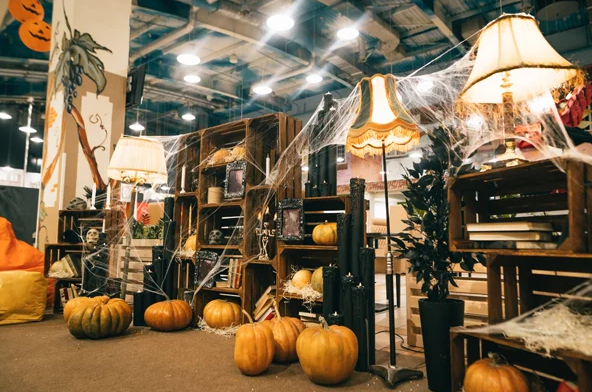
As a billion-dollar sector within the retail industry, a comprehensive grasp of Halloween statistics is a critical component of retail prosperity. A meticulous examination of these data offers crucial insights into consumer behavior and preferences, such as identifying the average spending budget per household. This year’s estimations are even more impressive than last year’s numbers, with significant increases in various aspects of consumer behavior. According to NRF, the average spending per consumer is projected to be $104, showing that U.S. consumers are eager to celebrate the most spooky season of the year.
However, retailers should take into account the rising inflation-driven costs of living. Therefore, communicating cost-effective promotions and products can be a lifeline for any retail business willing to capitalize on the opportunity. By analyzing statistics, retailers can make informed future decisions, optimizing their marketing strategy from inception to execution and therefore increasing their sales and their customer base.
Why Halloween statistics matter for retailers
Seasonal marketing offers many advantages for retailers, making it a strategic endeavor worthy of consideration. However, for retailers to create creative Halloween ideas and incorporate them into actionable marketing plans, they must first collect data and information.
In this case, Halloween presents the prospect of increased sales, leveraging the hype and the FOMO of the festive spirit to encourage impulse purchases among customers. Additionally, Halloween is a potent tool for brand building, and well-crafted Halloween marketing efforts can enhance brand recognition and awareness. The deployment of seasonal products can also be helpful for increased foot traffic during typically slower periods preceding the crucial holiday quarter.
Halloween statistics: A journey through history
Halloween boasts a fascinating historical tapestry that stretches back to ancient times, offering valuable insights and useful facts for retailers to craft tempting campaigns. To gain a comprehensive historical perspective that informs retail benefits, we can dissect this retrospection into several sections, each filled with facts and statistics from different eras.
Historical background of Halloween: A retail perspective
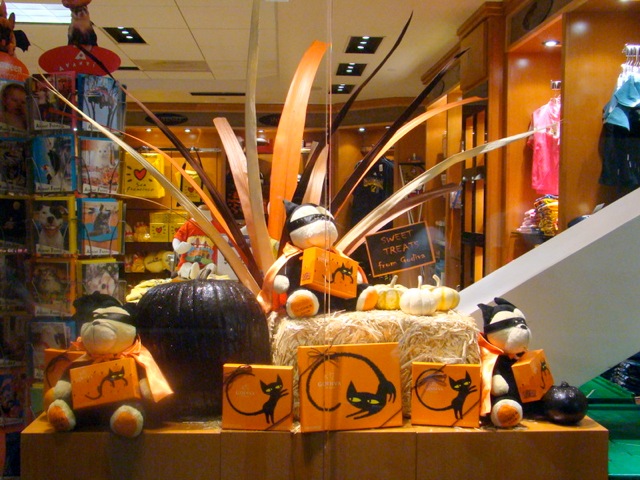
Halloween originates in the ancient Celtic festival known as Samhain (summer’s end), a tradition that traces back over 3,500 years. The festival symbolized the last days of the fall harvest, and it was believed that the veil between the living and the dead was at its thinnest at the time. Through migration and cultural exchange, the test of time has transformed a traditional Irish holiday into the unique American version of Halloween.
Halloween’s cultural evolution has impacted different retail industry sectors besides candy, decorations, and costumes. The Halloween market has influenced the media and pop culture and has inspired a lot of different social gatherings, like parties, haunted houses, and attractions, as well as community events.
How traditions have shaped Halloween shopping trends

Comprehending the historical aspects of Halloween equips retailers with a profound understanding that can shape their business strategies. Today, Halloween has firmly established itself as a critical shopping season, providing a considerable boost to retailers in anticipation of the holiday quarter. By integrating Halloween’s rich tapestry of traditions and statistics into their marketing endeavors, retailers stand poised to harness the full potential of this thriving shopping season.
The evolution from Celtic roots to a U.S. retail phenomenon
Halloween’s evolution from its Celtic roots to its contemporary retail prominence is a captivating journey and has wielded considerable influence on shopping patterns. As the Irish sought refuge from the devastating potato famine of the 1840s, they carried their cherished Halloween customs. This tradition gradually permeated the nation’s culture, culminating in a peak of mischievous Halloween pranks during the 1920s, specifically in 1927. It is widely believed that community-oriented trick-or-treating gained popularity in the 1930s to manage these pranksters’ shenanigans.
Moreover, It was also in the early 1900s that a paper goods company named Dennison Manufacturing Co. The company played a pivotal role in popularizing Halloween. From 1909 to 1940, the retailer was the primary mass producer of Halloween postcards, costumes, and decorations in the U.S. Today, Halloween stands as a formidable $10.6 billion industry in the United States alone, attesting to its significance in the retail landscape.
Last but not least, the custom of trick-or-treating has been around since the Middle Ages, named “guising” in Ireland and Scotland. Nowadays, this fun custom has propelled candy to the forefront of the Halloween shopping frenzy as the most renowned way to celebrate the occasion. Simultaneously, the age-old practice of adorning homes and yards has spawned a thriving $3.4 billion industry in the United States centered around Halloween decorations.
From Jack O’Lantern to modern-day retail symbolism
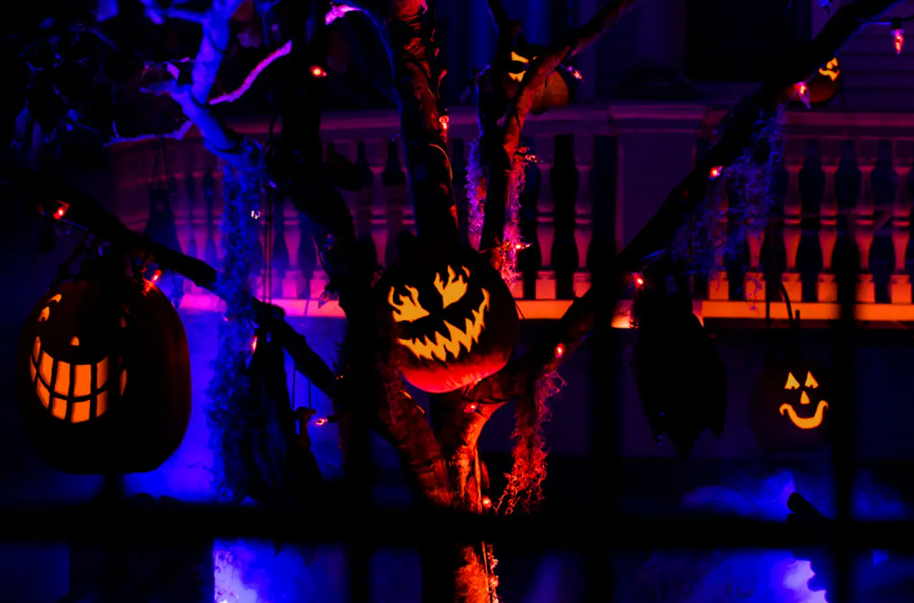
The Jack O’Lantern, an emblematic Halloween tradition, has undergone a fascinating transformation. Stingy Jack, an Irish man, outwitted the devil, resulting in his exclusion from heaven and hell. As a punishment, he wandered the Earth, bearing a lantern, which gave rise to the moniker “Jack of the Lantern.” At first, people crafted turnips, beets, and potatoes to fend off malevolent spirits, but now, pumpkins have emerged as the preferred carving medium. These iconic pumpkins retained their protective symbolism and became a popular choice for decorating homes and businesses during the Halloween season.
Halloween sales peak: Essential statistics for retailers
As we go through the importance of Halloween through intriguing facts and statistics, it becomes clearer that this holiday casts a powerful spell on the retail and eCommerce realms. For retailers to illuminate the complexity of the ever-changing consumer patterns, it is necessary to examine all the different ways we celebrate Halloween.
Halloween statistics: Consumer habits and behavioral data
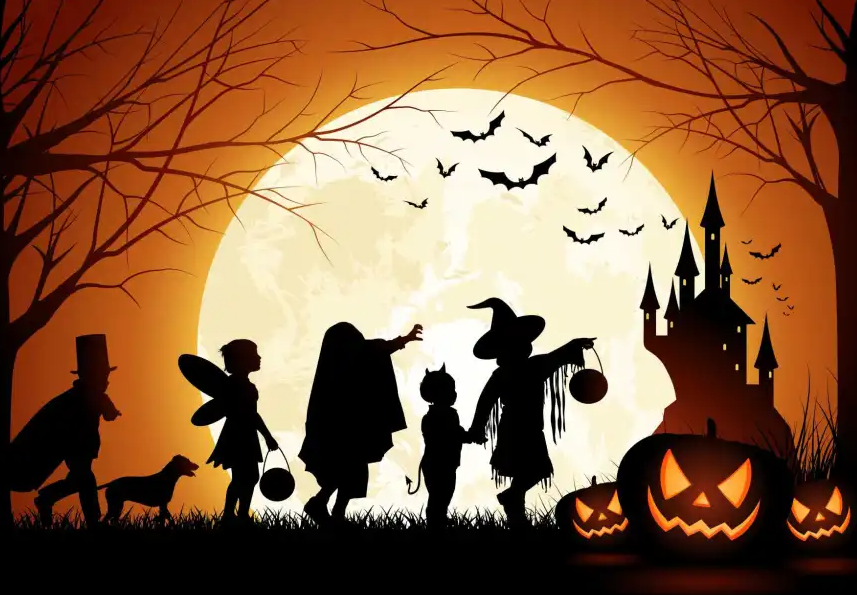
Every new fact tells a different story and responds to specific segmented demographics, habits, and preferences. Ergo, retailers must stay updated and understand the personas they wish to accommodate to offer products and services that will satisfy the demand. So take a look below and learn more about your customers!
- The collective spending on decorations, a trend that gained momentum during the pandemic and still holds sway with consumers, is projected to reach a substantial $3.8 billion. (NRF)
- In general, the rates have decreased this year since, 52% of US consumers will decorate this year, compared to 53% in 2023. (NRF)
- In 2023, Halloween spending reached a new record – $12.2 billion to be exact. In other words, participation last year, surpassed pre-pandemic levels.
- 47% of shoppers started their Halloween purchases before October, suggesting a trend toward earlier holiday preparation. (NRF)
- In 2024, consumers are projected to spend roughly $100 on Halloween-related goods, such as costumes, decorations, and candy, which indicates a steady rise in Halloween spending in recent years. (NRF)
- 15% of parents allow their kids between the ages of 9-11 to go trick-or-treating alone. (HuffPost)
- Halloween season fires resulted in approximately $14 million worth of direct property damage from 2018 to 2022. (Security Sales)
- 67% of Americans express interest in the prospect of purchasing a haunted house as their residence if the house is appealing. Although fewer than half would be willing to pay the full market value for such a property.
- The estimated number of children under 18 years old in the United States is 72.8 million. (Census)
- 12% of Americans are planning to host Halloween parties. (Statista)
- 30% of US consumers won’t celebrate Halloween in 2024. (Statista)
- The annual revenue generated from ticket sales for haunted attractions ranges from $300 to $500 million, with 80% of these attractions being organized by charitable organizations. (America Haunts)
- Halloween greeting card spending is estimated to reach $500 million in 2024, just like last year. Despite the slowdown, this figure still surpasses pre-pandemic levels. (NRF)
How costume and candy sales shape the Halloween retail landscape
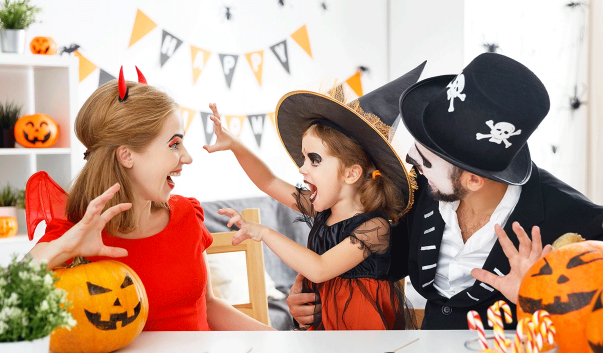
Costumes and candy are the backbone of Halloween, all over the world and not only in the U.S. So we had to dedicate an entire section to these two customs as they form and embody the spirit of Halloween.
- The top trending costumes for 2024 are Shrunken Head Bob from the movie Beetlejuice Beetlejuice, Raygun, the Australian breakdancer at the Paris Summer Olympics, and CatNap, a villainous purple cat from the “Poppy Playtime” video game. (Smithsonian)
- The rankings for the 2024 top trending costumes include Delores from Beetlejuice Beetlejuice, the personified emotions from Inside Out 2 (Envy, Anger, Disgust, Anxiety, and Joy), and Lady Deadpool, Wolverine, and Gambit from the Deadpool & Wolverine spinoff. (Smithsonian)
- In 2023, Americans collectively invested $4.1 billion in Halloween costumes. (NRF)
- This year 49% of adults chose to partake in Halloween by dressing up in costumes. (NRF)
- The total spending on candy in 2024 is projected to reach $3.5 billion and 95% of the consumers are planning to buy the sugary goods. (NRF)
- Pets will be part of the fun too, as 11% of people surveyed said they plan to dress up their pets! (Goodwill)
- The top Halloween costumes for pets this year are pumpkin, hot dog, bat, ghost, and bumblebee. (USA Today)
- Additionally, a staggering 3 million adults are set to dress in vampire costumes and 5.8 million in witch costumes for Halloween. (USA Today)
- 57% of people are thinking about using DIY costumes and secondhand decorations to save money. (Goodwill)
- Halloween candy holds a special place in the hearts of Americans, resulting in significant expenditures during such a creepy holiday. Approximately 600 million pounds of Halloween candy are purchased annually. (Me Mother Earth)
- 46% of Americans are willing to distribute candy to trick-or-treaters on Halloween. (The News & Observer)
- An overwhelming 86% of parents confess to indulging in a bit of candy stealing from their kids’ Halloween stashes. (SWNS Digital)
Decoding the Golden Quarter of Halloween retail
The Golden Quarter, the busiest time of the year in the grocery, retail, and eCommerce sector, kicks off precisely 100 days before Christmas on September 16th, 2024. With adept planning and execution, retailers have the opportunity to secure a substantial share of their annual profits by achieving success during this pivotal period. While stores may launch their holiday marketing campaigns earlier each year, this early start is a deliberate strategy aimed at maximizing results.
During the annual State of Retail & the Consumer virtual discussion, the National Retail Federation (NRF) unveiled its annual sales forecast, where prominent retail executives, leading economists, and consumer experts came together to provide a view of the American retail industry. The National Retail Federation predicts that retail sales in 2024 will grow by 2.5% to 3.5%, reaching between $5.23 trillion and $5.28 trillion. This compares to a 3.6% growth rate in 2023, with total sales of $5.1 trillion. The 2024 forecast is similar to the average annual growth rate of 3.6% seen over the 10 years before the pandemic.
Halloween statistics: US and UK retail perspectives
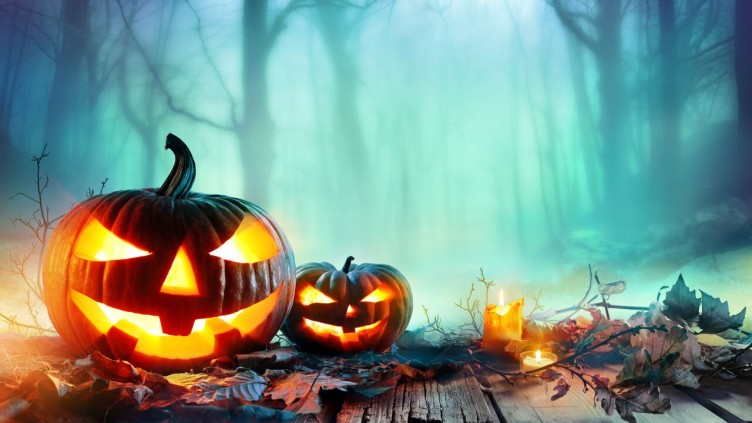
Comparing the Halloween markets in the US and UK reveals interesting trends in consumer behavior, favored products, and historical spending patterns. Highlighting the shared enthusiasm both in the US and the UK, these comparative insights offer intriguing points of convergence and divergence between the two markets that are worth mentioning.
Celebrating Halloween: US vs. UK retail trends

Despite their shared spooky theme, Halloween and its UK counterpart, exhibit distinctive differences that influence various retail sectors and cater to distinct customer demographics.
In the realm of Halloween, characterized by its four primary pillars—candy, costumes, decorations, and pumpkins—Brits tend to show a greater affinity for candy and costumes, prioritizing these aspects over extravagant decorations. While the tradition of trick-or-treating originally emerged from Scotland and Ireland through the “guising” tradition, it has become more prevalent in the United States.
Moreover, in the U.S., costumes extend beyond scary portrayals, often encompassing less intimidating choices such as princesses and superheroes. On the other hand, in the UK, the themes lean towards the eerie and macabre, featuring ghosts, zombies, and other supernatural creatures. Furthermore, when it comes to Jack-o’-Lanterns, Scots and Irish tradition lies in the use of rutabagas or turnips as carving materials.
According to Cint, slightly more than a quarter of Americans (26%) and nearly a fifth of Brits (19%) plan to either go trick-or-treating or wait for costumed kids to come knocking on their doors. Halloween parties are also popular. In the UK, 16% of respondents said they would be hosting a party, while 10% plan to attend one. In the United States, the trend is reversed, with 14% planning to attend a party and 10% planning to host. For those choosing a media-based celebration, movies lead the way. Unfortunately for horror novel enthusiasts like Stephen King, only 1% of survey respondents in both the US and UK plan to read a scary book during Halloween. In contrast, 26% of Americans and 16% of Brits enjoy watching a horror movie or two on the holiday.
Interesting UK Halloween statistics that impact retail
Contrary to the US, Halloween is not that widely celebrated in the UK. However, it is surely catching on pretty quickly, bringing some interesting facts and statistics to the table.
- On the other side of the pond, 66% of UK consumers agree that Halloween is worth celebrating. (Cint)
- In the UK only 11% of the consumers plan to spend over £50 on Halloween. (Cint)
- Gen Z is the most likely to spend, with 84% planning to participate. However, millennials are expected to spend the most, averaging £43 each. (Finder)
- Gen Zers are expected to spend £40.89 million on Halloween products in 2024, while Millennials are projected to spend £43.31 in the UK. (Statista)
- Halloween spending in the UK is anticipated to reach £776 million in 2024. (Finder)
- About 58% of Brits plan to make a Halloween-related purchase, with an average of £25 per person. (Finder)
- London is predicted to lead in spending, with 74% planning to spend £43 per person. (Finder)
- Meanwhile, 62% of Brits plan to spend less than £20 or nothing at all. (Finder)
- One in four Brits (25%) say Halloween is their favorite holiday. (Finder)
- According to a recent Finder survey, Brits are set to spend a total of £776 million on Halloween festivities in 2024, with roughly three out of five (58%) planning to buy decorations, costumes, or other celebratory items.
- Despite an average planned spend of £25, many people are still looking to cut costs—62% say they plan to spend under £20 or nothing at all this Halloween. (Finder)

Halloween statistics: Leveraging business opportunities
Halloween promotions provide a canvas for creativity in marketing strategies, enabling engaging interactions with customers. As a result, employing Halloween statistics in business strategies proves invaluable, so that professionals can pinpoint the areas (namely the products) of focus and their target groups. The escalating competition in Halloween displays can be harnessed by retailers, offering Halloween and autumn-themed products that resonate with this trend.
Strategic inventory management and personalized content for Halloween
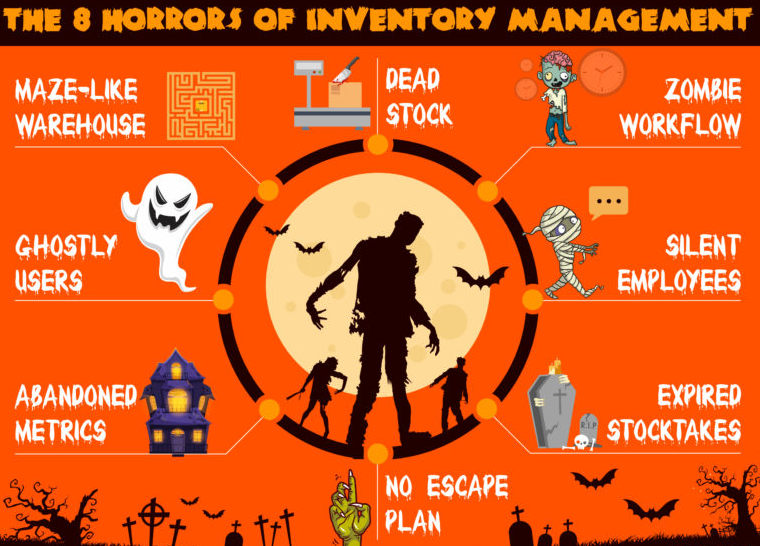
Fortunately, there are numerous strategies to harness the Halloween excitement and maintain a competitive edge. A valuable tactic would be to repurpose and manage your existing inventory resourcefully. Transforming autumn-inspired products that suit the Halloween spirit can prove to be a budget-friendly approach for capitalizing on the festive season.
One of the most effective means of communication involves the promotion of offerings with the power of Halloween email marketing. This channel provides an exceptional means of conveying spooktacular offers to a retailer’s customer base. Of course, all visuals, text, and promotions have to match the spooky spirit with vibrant colors.
To ensure that Halloween 2024 is not only unforgettable but also commercially prosperous, retailers have to invest in a personalized approach that will resonate with the preferences of their customer base. AI-generated product recommendations, cross-selling, and upselling opportunities will arise from this opportunity, and a powerful omnichannel customer engagement platform will prove valuable to this process.
Marketing strategies to boost Halloween sales
Depending on their respective sectors, retailers can strategically introduce Halloween discounts and promotions to stimulate sales and entice customers. To shed some light on the hottest celebration plans of the season:
- The lion’s share in 2024 will go to candy by 95%. (NRF)
- Following, decorations will account for 75%, costumes for 67%, pumpkin carving for 43%, and, of course, parties for 29%.
Data analytics can aid retailers in identifying trends based on consumer insights adjusting branding strategies to suit the season, and implementing location-specific targeted marketing initiatives. Regarding social media, businesses can promote user-generated content to increase brand awareness and word-of-mouth. On a more personal level, past behavior through unified customer profiles will aid professionals in targeting their audience with tailor-made offers.
Incorporating themed decor into retail strategy
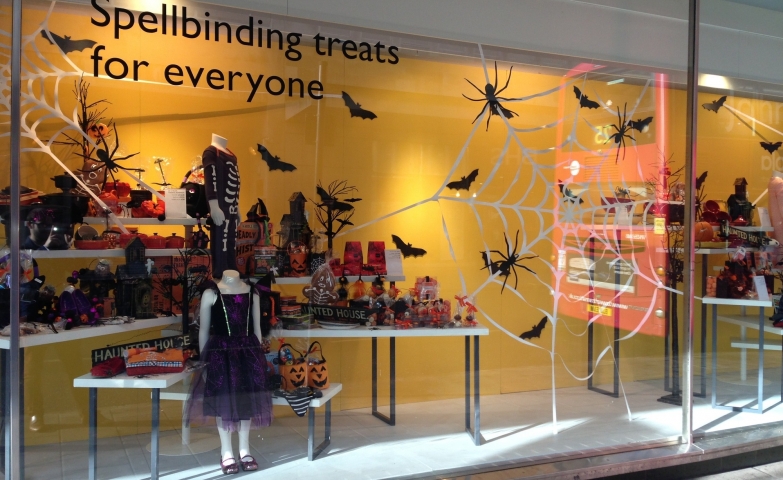
Transforming the store or website into a Halloween-themed space can cultivate a festive ambiance, attracting customers seeking the holiday spirit. Hosting Halloween raffles adds an interactive and enjoyable dimension to customer engagement while driving visits to the brick-and-mortar store or the e-shop. Lastly, integrating Halloween-related hashtags alongside a branded hashtag can extend brand awareness within the local community, leveraging the Halloween buzz. These tactics, guided by Halloween statistics, enable retailers to optimize their approach and capitalize on the seasonal opportunities presented by the Halloween hype.
Halloween statistics: Analyzing the 2024 trends for retailers
Analyzing last year’s Halloween numbers and anticipating the new trends in 2024 will provide retailers with valuable insights, enabling them to adapt to the fast-paced retail and eCommerce environment. The key is to meet the evolving needs of the customer base and implement data-driven business decisions to maximize their Halloween season profits.
Key takeaways for Halloween 2024

As we prepare for Halloween 2024, several anticipated retail trends are expected to define the season and set the tone for the upcoming years. Consumers are cutting back on everyday expenses, but they are still unwilling to forgo their favorite holidays and small luxuries. Despite tightening their budgets elsewhere, many view holidays like Halloween as essential indulgences.
- Holidays remain a priority for consumers, presenting an opportunity for retailers to focus on offering affordable but enticing products that tap into the emotional value of these celebrations.
- The projected Halloween spending in the U.S. indicates strong consumer enthusiasm despite economic challenges.
- The high participation suggests robust demand for themed products and experiences.
- Rising living costs are a concern, but consumers are still prioritizing holiday spending. Retailers can capitalize on this by promoting cost-effective products and offering attractive discounts to entice budget-conscious shoppers.
- More consumers are opting for DIY costumes and secondhand decorations to save money, presenting opportunities for retailers to market budget-friendly options and DIY kits.
- Seasonal marketing campaigns and Halloween-themed content are essential for brand building and driving impulse purchases, making Halloween a key opportunity for increasing brand recognition and foot traffic during slower periods.
Halloween statistics: Unique facts and success stories
Exploring some cool facts about Halloween can be an intriguing opportunity to leverage the holiday vibe to the fullest. Accordingly, learning from the best and taking advantage of some interesting ideas can create compelling strategies for retailers.
Leveraging fun facts about Halloween
The more you know about Halloween, the easier it is to define your strategy and work toward your business goals. Let’s take a look at some interesting trivia.
- The record for the world’s fastest pumpkin carving time is 24.03 seconds and is held by Stephen Clarke.
- The orange and black colors of Halloween have a deeper meaning than anticipated and are associated with the holiday’s tradition. Orange symbolizes the harvest of autumn, while black is the symbol of darkness. Combined, they serve as a reminder of the festival’s origins, signifying the boundaries between life and death.
- Pumpkins belong to the fruit category, rather than the vegetable, as they come from flowers.
- In the past, the goal of certain Halloween rituals was oriented towards finding a husband.
- Trick-or-treating was temporarily paused during World War II due to sugar rationing.
- The Guinness World Record for the most lit jack-o’-lanterns on display is 30,581, and it is held by the City of Keene, New Hampshire.
- Halloween and Dia De Los Muertos are not linked in any way. Halloween centers on darkness, death, ghosts, witches, candy, and costumes. In contrast, the Day of the Dead is explicitly focused on the afterlife and the act of remembrance.
Learning from the best: Successful Halloween marketing campaigns
Creative inspiration is an important part of the holiday campaign planning process and the marketing efforts of a retail business. Below, we delve into some of the most successful Halloween marketing campaigns executed by industry leaders for additional insights and ideas.
KFC: Cursed Colonel

In 2019, KFC in Australia launched a Halloween campaign called the “Cursed Colonel.” Partnering with Menulog the two brands provided customers a 25% discount on KFC orders nationwide. The campaign included surprise deliveries by individuals dressed as different versions of the Colonel, including Zombie, Werewolf, Skeleton, and Vampire Colonels, along with “Jack-In-A-Buckets” that surprised customers with false snakes.
Kit Kat: The candy bowl that never runs out
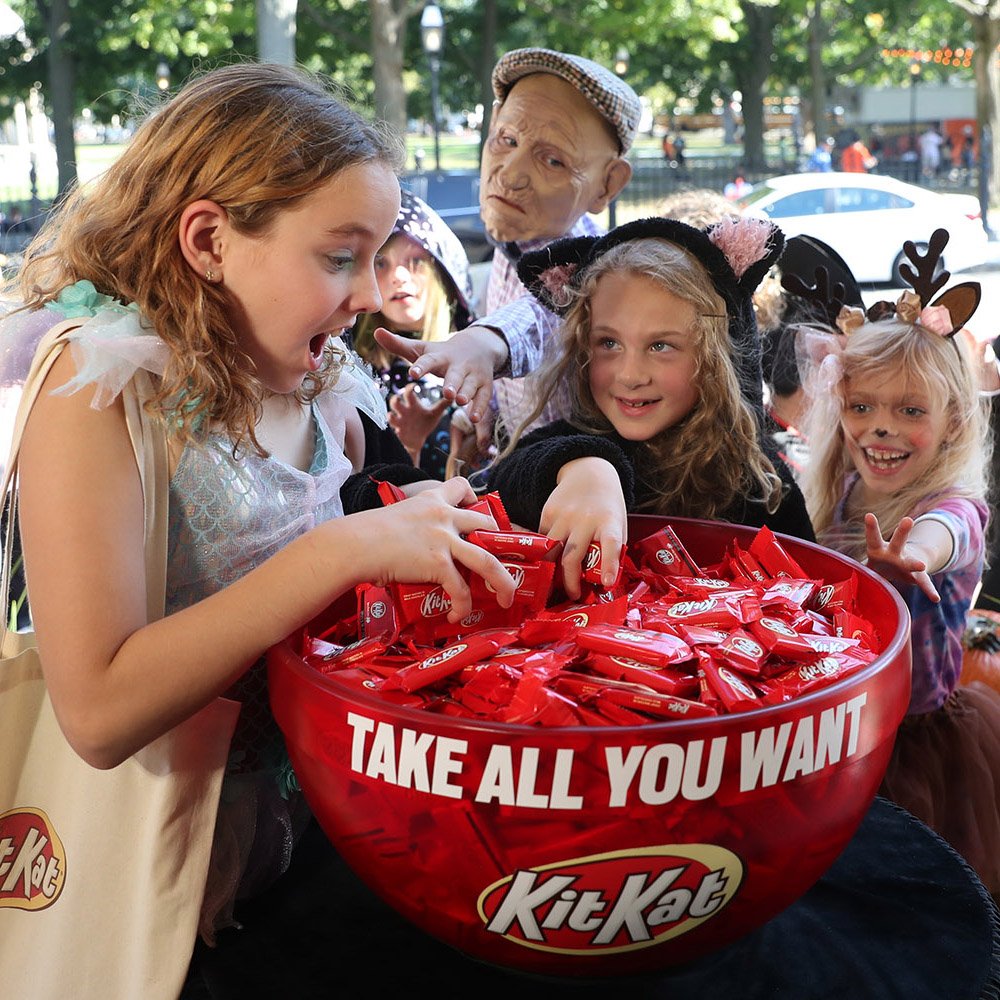
Kit Kat is embracing the Halloween spirit with a marketing campaign that promises a delightful surprise for every child, making their wish for endless candy true. In this campaign, when the candy bowl is empty, it magically replenishes itself. For more interaction and boosted social media engagement, Kit Kat has encouraged people to submit a request for the candy bowl’s visit to their hometown via Instagram.
Airbnb: A Night in the Catacombs
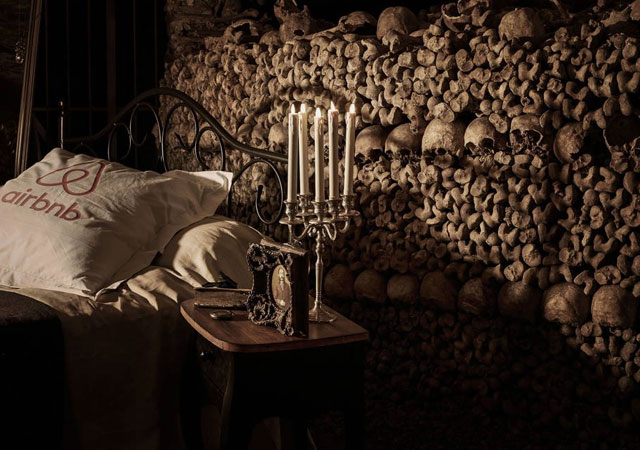
Airbnb invested €350,000 to rent the Paris catacombs as part of their “Night in the Catacombs” competition. The winner would be granted an overnight stay amidst seven million skeletons, a complimentary dinner and concert, and a chilling bedtime story session. The campaign’s prestige and exclusivity widely attracted participants, as it offered the enticing chance to become the sole living person to wake up in the Catacombs.
Lego Star Wars and Disney+: Terrifying Tales
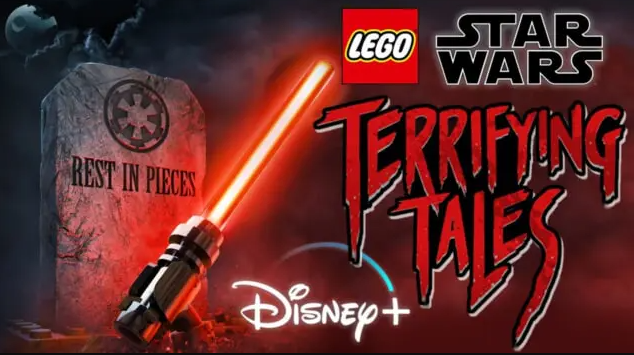
Halloween saw a powerful collaboration with three giant franchises working hand in hand, namely Lego Star Wars, and Disney+. Their “Halloweenstream” campaign features a Halloween special and five amusing short films, starring beloved Star Wars characters This partnership highlights the potential for brands to boost their impact during holidays through creative collaborations with like-minded brands.
Other useful Halloween Marketing resources for retailers
- 20 creative Halloween retail promotion ideas
- 5 Halloween Email Campaign Ideas to Hallo-win the Impressions this year
Conclusion: Halloween statistics as a tool for retail success
Halloween statistics serve as a valuable tool for achieving retail success and making the most out of this festive season. Decoding the evolving trends, consumer preferences, and historical significance of Halloween provides retailers with the insights needed to tailor and enhance their overall marketing strategy. From early shopping patterns to the influence of pop culture, these statistics empower retailers to navigate the excitingly spooky landscape of Halloween retail and establish their presence in the market.
By harnessing the power of Halloween statistics, retailers can carve out their own path to success and make the most of this spooktacular season. Do you think you are ready to take your eCommerce brand to the next level this Halloween? Contact us today to discuss how ContactPigeon’s growth experts can help you scale and achieve your business goals.

Let’s Help You Scale Up


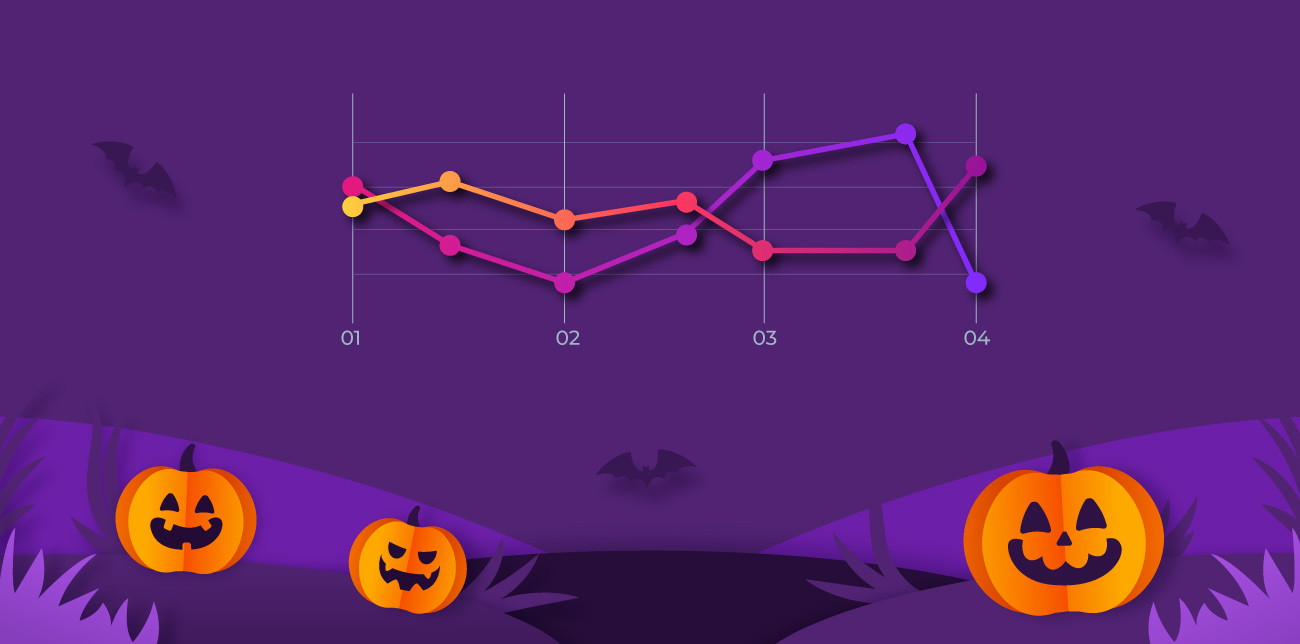

![Benchmarking Growth Strategies of Top Fashion Retailers [Study]](https://blog.contactpigeon.com/wp-content/uploads/2025/11/top-fashion-retailers.jpg)